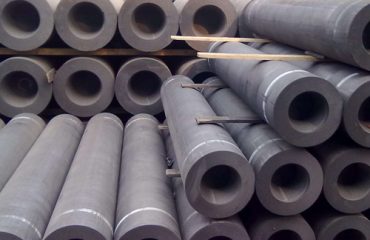The raw material of our company’s graphite plate is graphite square: high quality petroleum coke is selected as raw material for ordinary specification, high strength and high density graphite. Adopting advanced production technology and equipment, the product has the characteristics of high density, high compressive strength and bending strength, low porosity, anti ablation, acid and alkali resistance, etc. it is selected for the processing of metallurgical furnace, resistance furnace, lining material, chemical equipment, mechanical mold and special-shaped graphite parts.
Graphite anode plate (also known as anode graphite plate) is used as anode graphite plate, block or bar in electrolysis industry. There are two kinds of electrolysis processes using graphite anode, one is water solution electrolysis, the other is molten salt electrolysis. The chlor alkali industry of producing caustic soda and chlorine gas by electrolysis of salt aqueous solution is a big user of graphite anode. In addition, there are also some electrolyzers which use molten salt electrolysis method to produce magnesium, sodium, tantalum and other light metals and rare metals, and also use graphite anode.
Anode graphite plate is the use of graphite conductive characteristics, in nature, non-metallic minerals, graphite material is a very good conductivity material, graphite conductivity is one of the very good conductive materials, the use of graphite conductivity, graphite acid and alkali resistance, used to make up for the corrosion of metal in acid-base melt, solid and graphite material The anode plate is made of material.
Graphite anodes have been used in electrolyzers and diaphragm electrolyzers for a long time. During the operation of the electrolyzer, the graphite anode will be consumed slowly. The graphite anode is 4-6kg per ton of caustic soda in the electrolytic cell, and about 6kg in the diaphragm electrolyzer per ton of caustic soda. As the graphite anode consumption becomes thinner, the distance between cathode and anode increases, and the cell voltage will gradually increase. Therefore, after running for a certain time, it is necessary to stop the tank and replace the anode. In the mid-1960s, Dutch h. bill invented a titanium based metal anode coated with ruthenium. Because the metal anode is basically not consumed, it is also called dimensionally stable anode (DSA). In addition to no consumption and long service life, metal anode also has the advantages of high current efficiency, good quality of chlor alkali products, energy saving, no special pollution and less maintenance work. Therefore, it is favored and widely applied. However, due to the high price of metal anode, the scarcity of metal ruthenium resources, the supply is difficult to guarantee, and when using metal anode, the content of calcium and magnesium ions in electrolyte brine should not be more than 5 × 10. Therefore, it is necessary to carry out strict purification treatment on the electrolyte. It can be predicted that the metal anode will not completely replace the graphite anode in a relatively long period of time.

